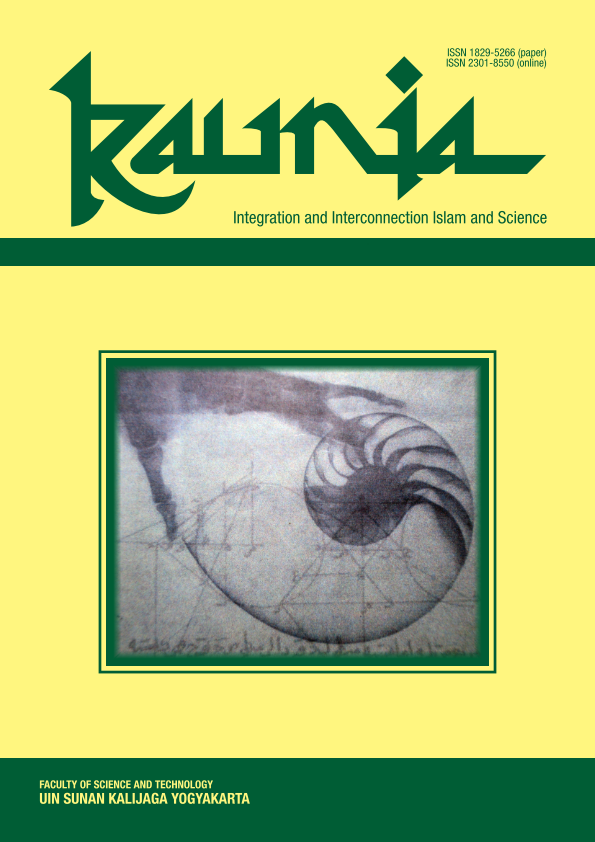The Reconstruction Concept of Musa Jabir ibn Hayyan Thought: Study on Chemistry for Establishing Civilization in Islamic Integration of Science
DOI:
https://doi.org/10.14421/kaunia.1308Keywords:
Jabir Bin Hayyan, Chemistry-science, Islamic civilization, IntegrationAbstract
The background of this paper was declining of historical thinking of Islamic civilization in science. The aims of the research were to know: 1) how the concept of Jabir Bin Hayyan thought for developing chemistry; 2) how the application of Jabir Bin Hayyan's concept of thinking in the integration of Islamic science and technology; 3) how the restoration of chemistry to build civilization. This paper used library research by using descriptive analysis. Musa Jabir Bin Hayyan was a pioneer in modern science and inherited Alchemy. The work that is still used today such as reduction, sublimation, and distillation. Jabir Bin Hayyan creates alembic material that can turn wine into alcohol. This discovery is not necessarily abused into liquor. In contrast, alcohol production became a key process for developing a number of chemical industries during Islamic civilization. Alchemy has declined in the end of the 14th century and also as the lag progress of science in the Islamic world momentum, including chemistry. The decline of chemistry-science is the lack of moral support in Islamic civilization. Inserting the history and concepts of Muslim intellectual thought in science is the way to raise the age of Islamic civilization in present today. Integrating science with Islamic values needs to be applied. Because it can produce people who have intellectual and akhlakul karimah. Currently, the development of chemistry is increasing rapidly, both in terms of applied chemistry and pure chemistry. Those things are not separated from Muslim intellectuals’ struggle in developing science.
Downloads
Published
How to Cite
Issue
Section
License
All articles published in Kaunia are licensed under a Creative Commons Attribution-NonCommercial-ShareAlike 4.0 International license, with the copyright to these articles held by the journal. Anyone is free to read, download, copy, distribute, print, search, link to full text articles, or transform an article, in any medium or format, provided they do so non-commercially, give appropriate credit to Kaunia, and distribute any derivative work under the same (or equivalent) terms.
By submitting to Kaunia, authors agree to both the terms of the CC BY-NC-SA license and the automatic transfer of the copyright to their article if it is accepted.









